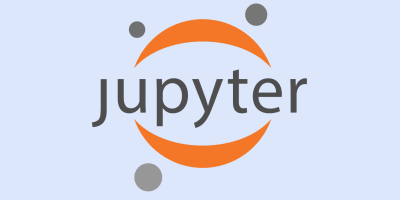Python Basic
สอน Python Python นับเป็นภาษา...

ปัจจุบันความก้าวหน้าทางเทคโนโลยีคอมพิวเตอร์เป็นไปอย่างรวดเร็ว เกิดข้อมูลขนาดใหญ่บนระบบคอมพิวเตอร์ ส่งผลให้การพัฒนางานเพื่อการวิเคราะห์ข้อมูลทางด้านวิทยาการข้อมูลเป็นที่ต้องการอย่างมาก โดยภาษาไพทอนนั้นเป็นภาษาหนึ่งที่มีผู้สนใจต้องการเรียนรู้เพื่อนำไปใช้ประโยชน์ดังกล่าว การพัฒนารายวิชานี้จึงเป็นประโยชน์และเปิดโอกาสผู้ที่สนใจสามารถเข้ามาศึกษาได้
คอร์สนี้เป็นการแนะนำเครื่องมือการเขียนโปรแกรมและไลบรารีที่จำเป็น Jupyter Notebook ทบทวนเทคนิคการเขียนโปรแกรมไพทอนพื้นฐานเช่น lambda, การจัดการไฟล์ .csv กระบวนการของวิทยาศาสตร์ข้อมูล การใช้ไลบรารี Pandas and Dataframe สำหรับการจัดการข้อมูลและเทคนิคการทำความสะอาดข้อมูลด้านวิทยาการข้อมูล การใช้ไลบรารี Numpy เพื่อการคำนวณทางวิทยาศาสตร์ และ การใช้ไลบรารี Mathplotlib เพื่อการแสดงผลข้อมูล
Module 1: Installing Software and System Setup
Module 2: Python Language Basics
Module 3: Built-In Data Structures, Functions, and Files
3.1 Built-In Data Structures, Functions, and Files
3.2 Functions
Module 4: NumPy Basics: Arrays and Vectorized Computation
4.1 The NumPy ndarray: A Multidimensional Array Object
4.2 Pseudorandom Number Generation
4.3 Universal Functions: Fast Element-Wise Array Functions
4.4 Array-Oriented Programming with Arrays
4.5 File Input and Output with Arrays
4.6 Linear Algebra
Module 5: Getting Started with pandas
5.1 Introduction to pandas Data Structures
5.2 Essential Functionality
5.3 Summarizing and Computing Descriptive Statistics
Module 6: Data Loading, Storage, and File Formats
6.1 Reading and Writing Data in Text Format
6.2 Binary Data Formats
Module 7: Data Cleaning and Preparation
7.1 Reading and Writing Data in Text Format
7.2 Data Transformation
7.3 Extension Data Types
7.4 String Manipulation
7.5 Categorical Data
Module 8: Data Visualization
ปัจจุบันมีการนำข้อมูลขนาดใหญ่ (Big Data) กันมากขึ้นตามหน่วยงานต่างในบ้านเรา ขั้นตอนการส...
Django เป็นหนึ่งเฟรมเวิร์คที่ได้รับความนิยมในการนำไปพัฒนาเว็บไซต์ระดับโลกมากมาย อาทิ In...
ด้วยความต้องการที่เพิ่มขึ้นสำหรับนักพัฒนาแบบ Full-Stack มีความจำเป็นที่จะต้องเรียนรู้กา...
หลักสูตรนี้เป็นพื้นฐานการเรียนรู้ภาษา Python สำหรับการนำไปต่อยอดด้าน internet of things...
Django framework เป็นหนึ่งในเฟรมเวิร์คที่พัฒนามาจากภาษา Python ได้รับความนิยมในการนำไปพ...